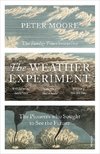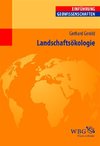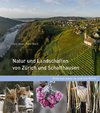
Natural history of Vermont
Source: Wikipedia. Pages: 60. Chapters: Flora of Vermont, Trees of Vermont, Kalmia latifolia, Fraxinus americana, Vaccinium vitis-idaea, Acer saccharum, Panicum virgatum, Acer rubrum, Liriodendron tulipifera, Cornus florida, Acer negundo, Calamagrostis canadensis,... Viac o knihe
Produkt je dočasne nedostupný
18.04 €
bežná cena: 20.50 €
O knihe
Source: Wikipedia. Pages: 60. Chapters: Flora of Vermont, Trees of Vermont, Kalmia latifolia, Fraxinus americana, Vaccinium vitis-idaea, Acer saccharum, Panicum virgatum, Acer rubrum, Liriodendron tulipifera, Cornus florida, Acer negundo, Calamagrostis canadensis, Allium tricoccum, Nyssa sylvatica, Sassafras albidum, Picea glauca, Arisaema triphyllum, Rhododendron maximum, Conopholis americana, Campanula rotundifolia, Sarracenia purpurea, Ceanothus americanus, Viburnum opulus, Arctostaphylos uva-ursi, Ulmus thomasii, Fraxinus pennsylvanica, Rhus typhina, Symplocarpus foetidus, Cypripedium reginae, Viburnum lentago, Cornus sericea, Vaccinium uliginosum, Asarum canadense, Allium canadense, Eurybia macrophylla, Lindera benzoin, Ambrosia artemisiifolia, Goodyera repens, Lobelia inflata, Pterospora, Vaccinium angustifolium, Morus rubra, Carex pensylvanica, Maianthemum canadense, Acer spicatum, Symphyotrichum novae-angliae, New England Grassroots Environment Fund, Castilleja septentrionalis, Northern highbush blueberry, Vallisneria americana, Champlain Sea, Snow roller, Montia fontana, Canadian blueberry, Green Mountain National Forest, Crataegus iracunda, Calopogon tuberosus, Acer nigrum, Vermont Natural Resources Council, Phlox divaricata, Rhododendron groenlandicum, Utricularia cornuta, Viburnum acerifolium, Galearis spectabilis, Vermont Institute of Natural Science, Vermont Land Trust, Aplectrum, Gentiana crinita, Scrophularia marilandica, Utricularia resupinata, Lake Vermont, The Center for Northern Studies, Babcock Nature Preserve. Excerpt: Panicum virgatum, commonly known as switchgrass, is a perennial warm season bunchgrass native to North America, where it occurs naturally from 55°N latitude in Canada southwards into the United States and Mexico. Switchgrass is one of the dominant species of the central North American tallgrass prairie and can be found in remnant prairies, in native grass pastures, and naturalized along roadsides. It is used primarily for soil conservation, forage production, game cover, as an ornamental grass, and more recently as a biomass crop for ethanol and butanol, in phytoremediation projects, fiber, electricity, and heat production and for biosequestration of atmospheric carbon dioxide. Other common names for switchgrass include tall panic grass, Wobsqua grass, blackbent, tall prairiegrass, wild redtop, thatchgrass, and Virginia switchgrass. Root system of switchgrass grown at the Land InstituteSwitchgrass is a hardy, deep-rooted, perennial rhizomatous grass that begins growth in late spring. It can grow up to 2.7 m high, but is typically shorter than big bluestem grass or indiangrass. The leaves are 30-90 cm long, with a prominent midrib. Switchgrass uses C4 carbon fixation, giving it an advantage in conditions of drought and high temperature. Its flowers have a well-developed panicle, often up to 60 cm long, and it bears a good crop of seeds. The seeds are 3-6 mm long and up to 1.5 mm wide, and are developed from a single-flowered spikelet. Both glumes are present and well developed. When ripe, the seeds sometimes take on a pink or dull-purple tinge, and turn golden brown with the foliage of the plant in the fall. Switchgrass is both a perennial and self-seeding crop, which means farmers do not have to plant and reseed after annual harvesting. Once established, a switchgrass stand can survive for ten years or longer. Unlike corn, switchgrass can grow on marginal lands and requires relativel...
- Vydavateľstvo: Chronicle Books
- Formát: Paperback
- Jazyk:
- ISBN: 9781156136898




 Nemecký jazyk
Nemecký jazyk 
 Anglický jazyk
Anglický jazyk 






